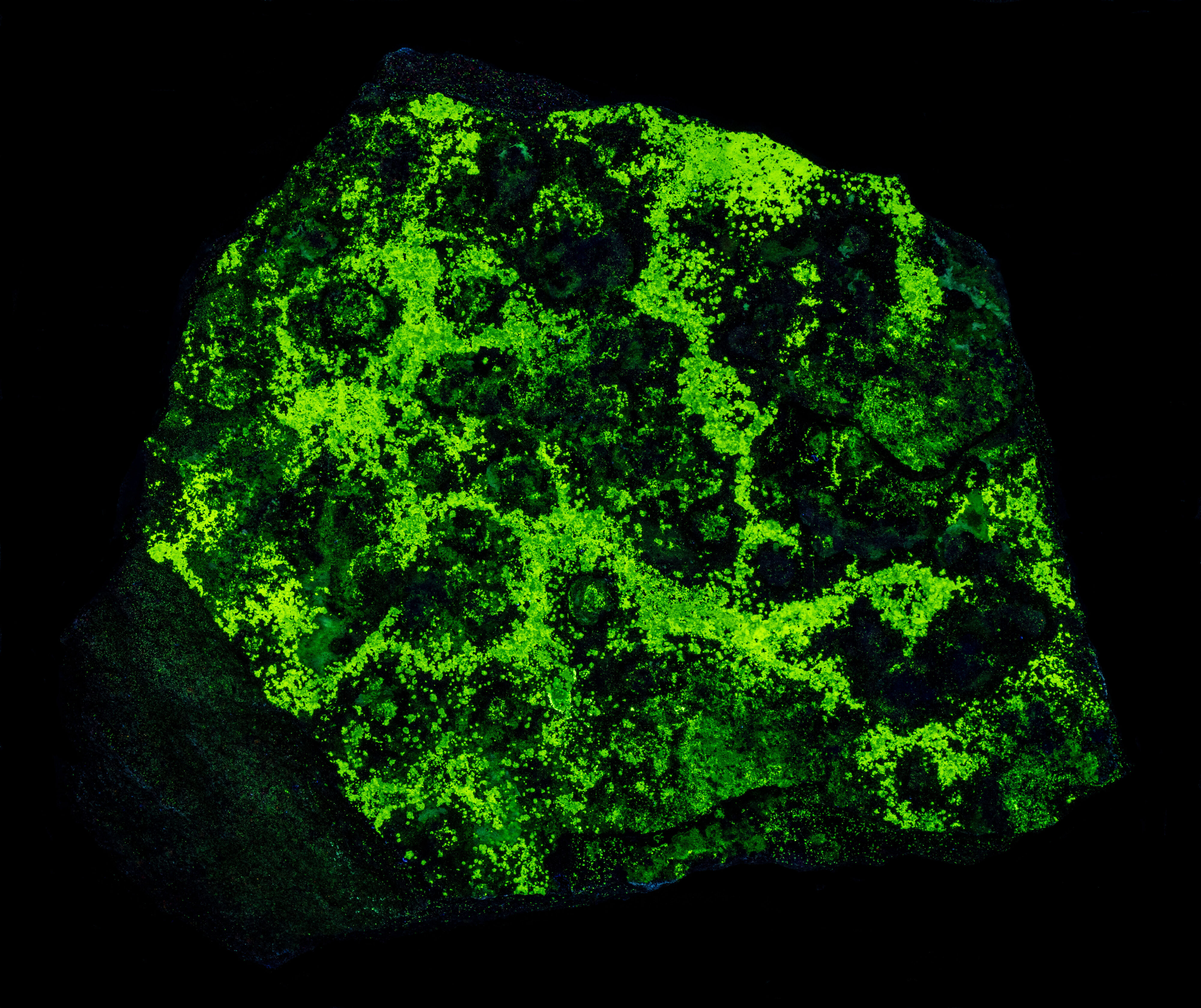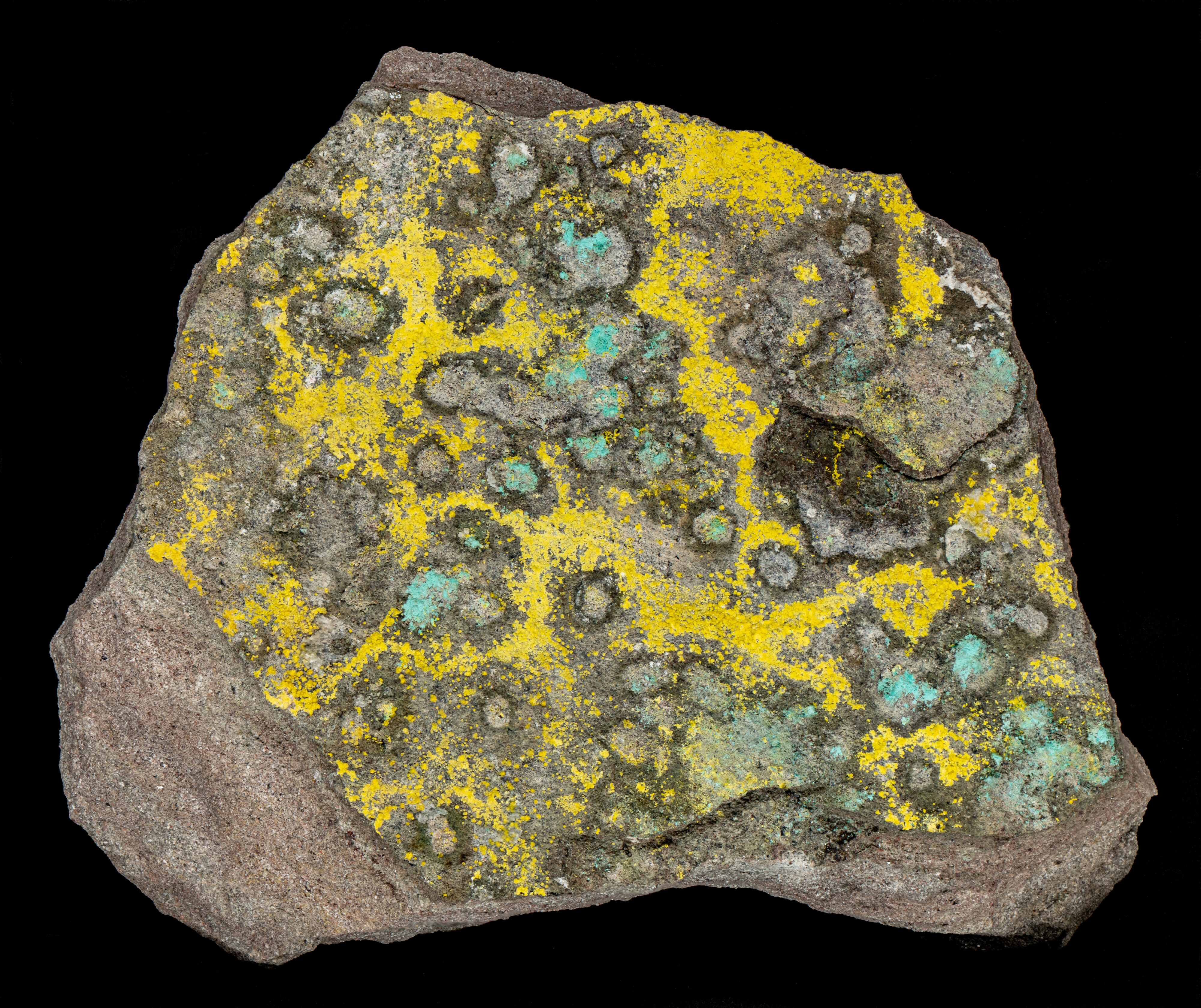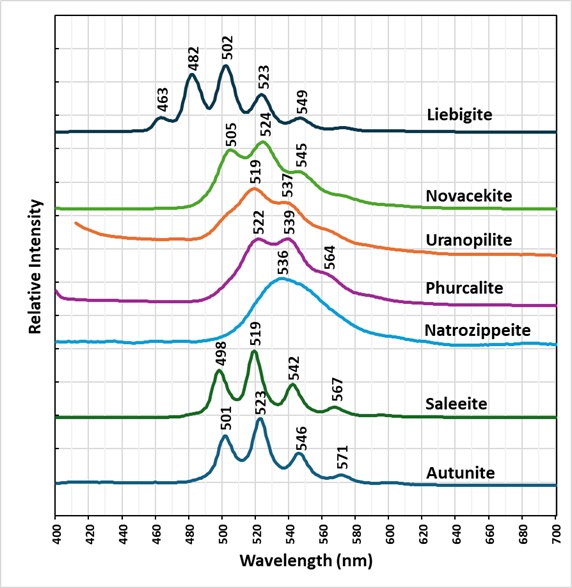Phurcalite from the Posey Mine, Utah
Contributed by: Michael Crawford
Date: Aug 1st, 2025
Locality: Posey Mine, Red Canyon Mining District, San Juan County, Utah, USA (See on Mindat)
Size: 8 x 10.5 cm
Description:
A specimen of green, fluorescent yellow phurcalite (Ca2(UO2)3(PO4)2O2·7H2O) and non-fluorescent green brochantite (Cu4(SO4)(OH)6) from the Posey Mine, San Juan County, Utah. The Posey mine ore was originally a uraninite-sulfide deposit that has been heavily oxidized. These are secondary minerals that form a coating on a bedding surface of sandstone.
Phurcalite fluoresces green under all wavelengths of UV illumination. The shortwave emission spectrum of phurcalite has two distinct peaks at 522 nm and 539 nm and an inflection around 564 nm. The peaks of the phurcalite occur at wavelengths different from several other uranium minerals. The uranyl ion that activates the green fluorescence is part of the phurcalite crystal structure and not an impurity in the mineral. The green fluorescence is an intrinsic property of phurcalite.
The radioactivity of this specimen is around 700 CPM. The radioactivity is higher because the uranyl ion is part of the mineral structure and not a trace amount replacing some element in a mineral.
Summary of luminescence responses:
Phurcalite (Mindat) (RRUFF)
- Fluorescence under Shortwave (255nm LED) UV light: Green
- Fluorescence under Midwave (305nm LED) UV light: Green
- Fluorescence under Longwave (365nm LED) UV light: Green



